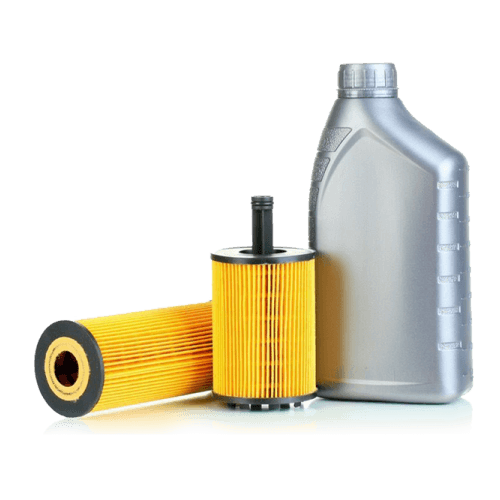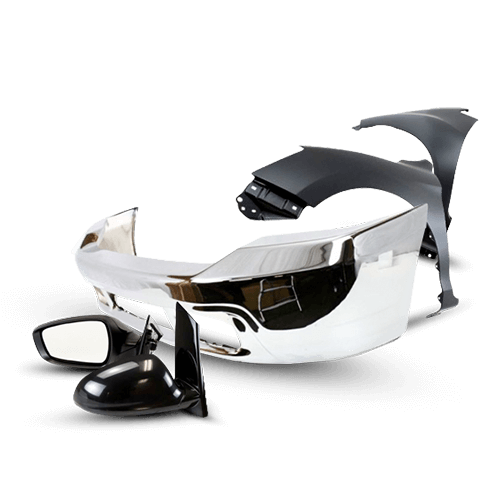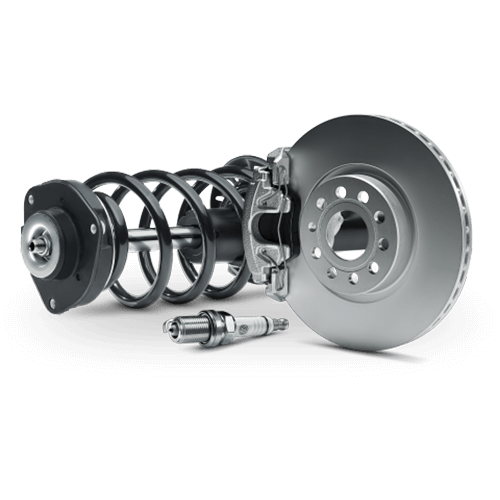
What Is an Alternator in a Car? Definition And How It Works
Key Takeaway
Before diving deep into alternator mechanics, here's what you need to know:
- An alternator is your car's electrical power generator that converts mechanical energy into electrical energy to power all electrical systems
- It charges your battery while the engine runs, ensuring you never run out of power on the road
- Warning signs include dimming lights, dead battery, and dashboard warning lights – catching these early can save you from being stranded
- Most alternators last 80,000-150,000 miles but can fail prematurely due to various factors
- Quality replacement matters – choosing the right alternator ensures reliable performance and longevity
- Ready to upgrade or replace your alternator? Browse our complete alternator collection at BestParts.ca.
Introduction: The Unsung Hero of Your Vehicle's Electrical System
Have you ever wondered what keeps your car's lights bright, radio playing, and all those complex electronic systems running smoothly? The answer lies under your hood in a component called an alternator.
What is an alternator in a car? Simply put, an alternator is an electrical generator that converts mechanical energy from your engine into electrical energy. It's responsible for powering all electrical components in your vehicle while simultaneously recharging the battery. Without a functioning alternator, your car would rely solely on battery power, which would drain within minutes.
Understanding your alternator can help you avoid unexpected breakdowns and costly repairs. Let's explore everything you need to know about this essential component.
How Does an Alternator Work? The Science Made Simple
Understanding what does an alternator do in a car starts with electromagnetic induction. When your engine runs, it turns a belt connected to the alternator's pulley, creating mechanical rotation.
The alternator contains a rotor (rotating part) and stator (stationary part). As the rotor spins inside the stator, it creates a rotating magnetic field that generates alternating current (AC) electricity. However, your car runs on direct current (DC), so the alternator's built-in rectifier converts AC to DC. A voltage regulator maintains steady output at 13.5-14.5 volts, protecting sensitive electronics.
The power generation process:
- Engine drives serpentine belt → alternator pulley rotates → rotor spins creating magnetic field → stator generates AC electricity → rectifier converts to DC → voltage regulator maintains safe levels → power flows to battery and vehicle systems
This process happens continuously while your engine runs, powering everything from headlights to your infotainment system.

Key Components of an Alternator in a Car
To understand what is the alternator in a car, let's look at its essential components:
Rotor Assembly - The spinning electromagnet that creates the rotating magnetic field necessary for power generation.
Stator - Contains copper wire windings where actual electricity generation occurs as the rotor's magnetic field passes through.
Rectifier (Diode Pack) - Converts alternating current to direct current using six diodes in a bridge configuration.
Voltage Regulator - Monitors and adjusts electrical output to prevent overcharging while ensuring sufficient power under varying loads.
Housing, Bearings & Cooling - Aluminum housing protects components and dissipates heat, while quality bearings enable smooth high-speed rotation.
Warning Signs: Is Your Alternator Failing?
Recognizing symptoms of a failing alternator can save you from roadside breakdowns. What does a car alternator do when it starts to fail? It sends several warning signals:
Dashboard Warning Light - Battery or ALT symbol illuminates while driving, indicating charging system problems.
Dimming or Flickering Lights - Headlights dim when idling or flicker while driving. Interior lights and dashboard displays may also fade.
Dead or Weak Battery - Battery repeatedly dies despite being new, as the alternator isn't recharging it properly.
Strange Noises - Grinding indicates worn bearings, squealing suggests loose belt, whining signals internal alternator damage.
Electrical Malfunctions - Power windows move slowly, weak AC, radio cutting out, sluggish power seats.
Voltage Test Results - Battery should read 12.6V engine off, 13.5-14.5V engine running. Below 13V indicates charging problems.
When Should You Replace Your Alternator?
Understanding replacement timing prevents breakdowns and protects electrical components.
Mileage Considerations - Most alternators last 80,000-150,000 miles. High-mileage vehicles with original alternators should consider proactive replacement, especially before long trips.
After Testing Confirms Failure - Don't guess—have your charging system tested professionally or with a multimeter. Many auto parts stores offer free testing.
Cost vs Risk - While replacement isn't cheap, delaying can be more expensive. A failing alternator damages batteries, requires jump-starts, and leaves you stranded. Proactive replacement gives you control over timing.
Choosing the Right Alternator for Your Vehicle
Not all alternators are equal. When shopping for an alternator in a car, consider these factors:
OEM vs Aftermarket - OEM alternators guarantee fit and performance but cost more. Quality aftermarket units offer comparable performance at lower prices. At BestParts.ca, we select alternators that meet or exceed OEM specifications without overpaying.
Amperage Rating - Stock alternators range from 60-150 amps. If you've added aftermarket electronics (audio systems, lighting), consider 10-20% higher output. Standard daily drivers work fine with stock amperage.
New vs Remanufactured - New alternators offer best reliability with longer warranties. Premium remanufactured units replace all wearing parts and perform like new at lower cost.
Warranty Protection - Look for at least one-year warranty. Quality units offer 2-3 years or lifetime coverage. Understand parts-only versus parts-and-labor coverage.
Vehicle Compatibility - Ensure exact match for your year, make, model, and engine. Wrong alternators result in poor fit or inadequate electrical supply. Browse our complete alternator selection with vehicle-specific compatibility tools.

Alternator Maintenance Tips
Simple practices extend alternator life and ensure reliable performance:
Belt Maintenance - Inspect serpentine belt every 30,000 miles for cracking or wear. Replace every 60,000-100,000 miles. Proper tension prevents slipping and premature bearing wear.
Clean Connections - Check alternator power and ground connections for corrosion. Clean terminals prevent charging issues even when the alternator is healthy.
Battery Care - A failing battery forces the alternator to work harder. Maintain battery properly and replace proactively to reduce alternator stress.
Professional Testing - Include charging system checks in regular maintenance. Annual testing for high-mileage vehicles identifies problems before failure.

What to Expect: Cost and Real Experience
Replacement Costs - Parts typically range $150-$500, with labor adding $100-$300. Total cost is usually $300-$800 depending on vehicle type. Luxury vehicles and difficult-to-access alternators cost more. DIY installation eliminates labor costs but requires mechanical skill.
Real-World Failure - Alternator problems often start gradually with dimming lights and occasional electrical issues, giving you time to plan replacement. However, sudden failures can occur, causing complete power loss while driving. Recognizing early symptoms prevents inconvenient roadside breakdowns and allows you to choose quality parts at competitive prices rather than accepting whatever's available during emergencies.
Conclusion: Keeping Your Vehicle Powered and Reliable
Understanding what is an alternator in a car empowers you to maintain your vehicle properly and recognize problems early. This essential component works tirelessly to convert mechanical energy to electrical power, charging your battery and powering all modern vehicle systems.
Key reminders: watch for warning signs like dimming lights and dashboard warnings, most alternators last 80,000-150,000 miles, and quality replacement parts ensure reliable performance. Regular maintenance and addressing symptoms promptly prevent inconvenient breakdowns.
Ready to find the perfect alternator? Browse our extensive selection at BestParts.ca, where quality alternators meet competitive pricing. Our alternator collection covers virtually every make and model with solid warranties.
Don't wait until you're stranded—take control of your vehicle's electrical system today!
Frequently Asked Questions About Car Alternators
How long does an alternator last in a car?
Most alternators last between 80,000 and 150,000 miles under normal driving conditions. Lifespan varies based on driving habits, climate, and alternator quality. City driving with frequent stops is harder on alternators than highway driving. Regular maintenance and avoiding excessive electrical loads extend alternator life.
Can I drive with a bad alternator?
You can drive only briefly using battery power alone—typically 20-30 minutes depending on electrical load. Warning lights will illuminate, electronic systems will fail, and eventually the engine stops as the battery can no longer power the ignition system. Driving with a known bad alternator risks being stranded and can damage your battery.
What kills an alternator?
Common causes include worn bearings from high mileage, failing batteries forcing continuous hard work, excessive electrical loads from aftermarket accessories, water intrusion from deep puddles, heat exposure near exhaust components, and poor quality installation. A failing battery is one of the leading causes of premature alternator failure.
How much does alternator replacement cost?
Total replacement typically costs $300-$800 depending on vehicle type. Parts range $150-$500, while labor adds $100-$300. Luxury vehicles and difficult alternator access increase costs. DIY replacement eliminates labor costs but requires tools and mechanical skill.
How can I test my alternator at home?
Use a multimeter to measure battery voltage. Engine off should read ~12.6 volts. Start the engine—voltage should increase to 13.5-14.5 volts. If voltage doesn't increase or reads below 13 volts, your alternator isn't charging properly. Turn on accessories and verify voltage stays above 13 volts under load.
What's the difference between the battery and alternator?
The battery stores electrical energy and provides power to start your engine and run systems when the engine is off. The alternator generates electrical power while the engine runs, simultaneously powering vehicle systems and recharging the battery. Think of the battery as a storage tank and the alternator as the pump that refills it.






















































